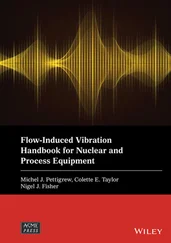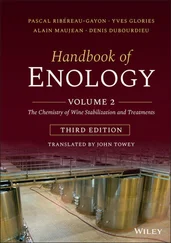
Figure 1.1 The OLED devices and aggregated‐state lightening. (a) The construction of OLED emitter, (b) OLED’s working mechanism, (c) aggregation‐caused quenching, and (d) aggregation‐induced emissive phenomenon.
Source: Reproduced with permission from John Wiley and Sons [3, 13, 14].
Under electrical excitation, emitter can produce singlet excitons and triplet excitons in the ratio of 1 : 3 according to spin statistics; there are several types of emitters with different photophysical mechanisms in terms of utilizing the electrons. Traditional fluorescent emitters can take advantage of singlet excitons to produce fluorescence, with maximum IQE of 25% and maximum EQE of merely 5% provided that out‐coupling efficiency is 20%. In order to improve OLEDs’ efficiency, triplet excitons were further taken into consideration and various mechanisms were put forward. According to photophysical mechanisms of utilizing triplet‐harvesting, OLEDs with high exciton utilizing efficiency (EUE) can be classified into different groups. Phosphorescent emitters can reach 100% IQE with phosphorescent emission through the mechanism of spin–orbit coupling [20]. Thermally activated delayed fluorescent (TADF) emitters can also reach the maximum IQE of 100% by upconverting the lowest triplet to the lowest singlet via reverse‐intersystem crossing (RISC) under external energy [21–27]. The emitters with hybridized local and charge transfer (HLCT) state also share 100% IQE with fluorescent emission, through upconverting triplet charge transferring (CT) state to singlet local excited (LE) state in higher excited states [28–31]. In addition, some other new mechanisms were reported in OLEDs with high EQE, such as triplet–triplet annihilation (TTA) [32], triplet exciton‐polaron annihilation [33], neutral π ‐radical [34], and singlet fission [35].
Furthermore, as a kind of solid‐state lightening technologies [5], not only molecular structures but also aggregated state of emitters can significantly influence the light‐emitting behaviors. One of the frustrating problems associated with most conventional luminogens is aggregation‐caused quenching (ACQ) effects, which mean that the fluorescence of the emitters was dim or totally quenched in the solid state, in spite of their strong emission in solution, and it may significantly reduce the device’s efficiency. The ACQ phenomenon is usually caused by the emitter’s large conjugated plane, which tends to experience serious intermolecular interactions, such as π – π stacking. Various methods, including chemical modifications or physical doping processes were proposed to reduce the molecule aggregation and the ACQ phenomena, but only limited achievement has been made and also some other side effects were brought about. Fortunately, some luminogenic molecules feature a distinctive photophysical process of AIE [14]. Opposite to the ACQ phenomena, the luminogens with AIE properties, or AIEgens for short, radiate rather stronger emission in solid films than they do in dilute solutions, with the restriction of intramolecular motions (RIM) in solid state considered as its mechanisms. The AIEgens are favored in the OLEDs’ applications, because of their potentials in increasing the OLEDs’ efficiency. When applied in OLED devices, the ACQ emitters are usually applied in the complex host–guest structure through doping method to overcome the quenching problems in solid states, with the disadvantages of complexed fabricated process, phase separation, and short lifetimes, while AIE emitters prefer the aggregated state for higher photoluminescence (PL) efficiency, and they could avoid the complex host–guest structure of the traditional OLEDs, with higher stability device, lower cost fabrication, and longer lifetime ( Figure 1.1). Till now, numerous AIEgens have been prepared and even applied as nondoped emitters, which not only increase the efficiency of OLED devices but also simplify the fabricating process and increase the device’s stability [27, 36–41].
In this chapter, we demonstrate the progress of emitters designed by combining AIE property with traditional fluorescent TADF and HLCT materials. The different AIEgens with various photophysical mechanisms were described with the related emissive materials applied in OLED devices. As for the traditional fluorescent AIE emitters, it currently took up the majority of AIE emitters applied in OLED devices and will be introduced according to different wavelengths from blue to green, red, and even white. However, due to the limited value of 5% for traditional AIE emitters‐based OLEDs, AIE property combined with other EUE mechanisms to prepare highly efficient emitters for OLED devices were also reported, such as the aggregation‐induced phosphorescent emissive (AIPE) emitters, aggregation‐induced delayed fluorescence (AIDF), and HLCT‐AIE materials. Finally, we give the outlook about the development of novel AIE emitters. From the molecular basis, it can also be noticed that not only did the small molecule but also the polymeric emitters develop fast. In 1987, Tang and VanSlyke reported that the first practical OLED was with tris‐(8‐hydroxyquinoline)‐aluminum as EML to achieve EQE of 1% [1]. And three years later, the first polymeric OLED based on poly( p ‐phenylene vinylene) was reported by Friend et al. in 1990 [42]. Till now both small‐molecule emitters and polymeric emitters have experienced fast progress and been applied in the OLEDs; however, in this chapter we emphasize on small‐molecule emitters, due to their vital and basic role of mechanism study and structural design that are also suitable for polymers [13]. Thus, we hope that through this chapter, not only will current status of AIE emitters with different photophysical mechanisms be carefully demonstrated but also more interest will be brought to the areas of AIE‐active emitters and move the OLED research forward.
1.2 Conventional Aggregation‐induced Emissive Emitters
The conventional fluorescent AIE emitters took the majority of all the AIE‐active emitters applied in the OLED area, because this kind was started earliest and designed easiest. Based on these both advantages, the traditional fluorescent AIE emitters have covered wide range of spectrum from blue to green and red, and even the white OLEDs based on these emitters have been fabricated, although EQE limitation of 5% for traditional AIE emitters‐based OLEDs due to the theoretical out‐coupling efficiency of 20%. Among these monochromatic OLED, the blue and green AIE‐active emitters share the larger part, while the red counterparts take up the smaller portion. In this section, we will demonstrate the conventional AIE‐active emitters‐based OLEDs in detail, according to different colors [27].
1.2.1 Blue Aggregation‐induced Emissive Emitters
One major method to prepare AIE emitters is to integrate the AIE groups into some previous ACQ emitters, such as carbazole, fluorene, and anthracene to change these emitters’ aggregated behaviors. Among various AIE moieties, tetraphenylethene (TPE) moiety is the most popular building block to construct AIE emitters, due to its simple structure and facile modification. Due to the sky‐blue emitting behaviors of TPE moiety, the blue and green emitters took the majority of AIE‐active emitters.
Zhao et al. introduced TPE moiety at the blue‐emitting ACQ moieties of fluorene through 2,7‐position to obtain blue luminogen BTPEBCF( Figure 1.2) with AIE behavior, dim in solution but emitting strongly in the aggregate state with 100% of PLQY. Based on this emitter, two sky‐blue OLEDs were constructed with the structures of indium‐tin oxide (ITO)/NPB (60 nm)/ BTPEBCF(20 nm)/TPBi (40 nm)/LiF (1 nm)/Al (100 nm) (device I) and ITO/NPB (60 nm)/ BTPEBCF(20 nm)/TPBi (10 nm)/Alq 3(30 nm)/LiF (1 nm)/Al (100 nm) (device II), reaching the maximum luminance of 13 760 cd/m 2, current efficiency (CE) and EQE of 7.9 cd/A and 2.9%, overperforming the ACQ counterparts [43]. Li et al. further linked TPE with blue‐emitting ACQ moieties of carbazole or spirofluorene to obtain two blue AIEgens STPEand TPE‐2Cz( Figure 1.2). And based on these both emitters, nondoped OLEDs were prepared with the construction of ITO/NPB (60 nm)/ SFTPE(30 nm)/TPBi (20 nm)/LiF (1 nm)/Al (100 nm) and ITO/NPB (40 nm)/ TPE‐2Cz(10 nm)/TPBi (10 nm)/Alq 3(30 nm)/LiF (1 nm)/Al (100 nm) with blue emission peaking at 466 and 462 nm and CIE x,yof (0.18, 0.24) and (0.17, 0.21). And the device based on SFTPEexhibited better EL performance with a maximum luminance and CE of 8196 cd/m 2and 3.33 cd/A [44]. Zhu et al. further prepared subsequent numbers of TPE moieties decorated with carbazoles, i.e., Cz‐TPEs, based on which solution‐processed OLED could be prepared with structures of ITO/PEDOT (40 nm)/ Cz‐TPEs(50 nm)/TPBi (40 nm)/LiF (1 nm)/Al (100 nm). All these OLEDs exhibited sky‐blue emission with maximum luminance of 2858 cd/m 2and a maximum CE of 5.5 cd/A [45]. Pyrene is a good deep‐blue emitter with ACQ properties, which is often widely used for construct emitters [46]. Through strategic design, Li et al. linked four TPE moieties to a pyrene core to obtain two blue derivatives Py‐4MethylTPEand Py‐4mTPE( Figure 1.2). The OLED device based on Py‐4Mtpe exhibited a better performance, with maximum CE, PE, and EQE of 4.02 cd/A, 3.08 lm/W, and 2.5 %, respectively [47]. Similarly, Hu et al. used two TPE moieties to link TPE core to obtain two blue AIEgens Py(5,9)BTPEand Py(5,9)BTriPEof butterfly shape ( Figure 1.2). The nondoped OLED based on Py(5,9)BTPEexhibited better performance with CIE coordinates of (0.19, 0.28), a maximum EQE of 3.35%, and CE of 6.51 cd/A [48]. By contract, another strategy was proposed with pyrene as a periphery and TPE acting as a core. Xie and Li et al. connected four pyrenes to the TPE cores to prepare the highly efficient blue emitter TPE‐4Pys( Figure 1.2). Its spin‐coated nondoped OLEDs can reach CE of up to 3.05 cd/A at 496 nm, while its doped OLED devices can achieve CE of up to 4.9 cd/A at 484 nm, among the best solution‐processable OLEDs based on blue AIE emitters [49].
Читать дальше













